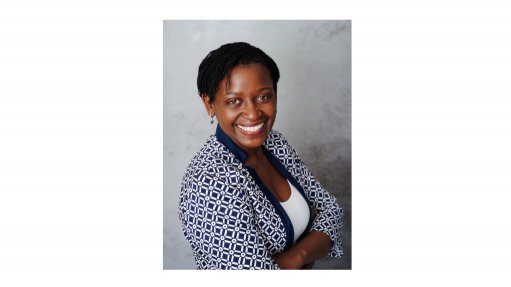
BRIDGET SSAMULA Many countries rely on the private sector to kickstart projects because these companies have done the research and built the prototypes, whereas with government, you have to wait for a more economic design solution that can be implemented at mass scale to push the developmental agenda
Industry body Engineering Council of South Africa (ECSA) has emphasised the significance of maintenance as a proactive measure against further decay of South Africa’s infrastructure. The council acknowledges the existing challenges facing the country but is optimistic about addressing them to ensure the resilience and longevity of infrastructure.
ECSA recognises various factors contributing to infrastructure challenges, such as adverse weather events linked to climate change, corruption and challenges in allocation of maintenance funds. Despite these issues, the council remains positive, highlighting the government's focus on prioritising social services during and after the Covid-19 pandemic. This approach aims to strengthen infrastructure and promote sustainable development.
ECSA CEO Dr Bridget Ssamula asserts that there exists a significant capital burden, creating challenges in raising funds for the growth, expansion and maintenance of infrastructure. “One impediment identified is the competition for funding driven by allocations to essential areas like social services and infrastructure, such as supporting university students, healthcare, education and the social grant system.Despite the pressing need in these areas, the situation is complicated by high unemployment and fiscal constraints.”
She emphasises the necessity of preventative maintenance as a cost-effective way of maintaining the design life of infrastructure and rejects the notion of waiting until the infrastructure is entirely deteriorated before taking action.
With a view to lifecycle costs as a tenable strategy, Ssamula expressed her support for the procurement models that address the lifecycle costs of infrastructure. “The tolling road model looks at the whole lifecycle of the project. So that when the government determines which company should operate that toll, it also ensures that the project costs and returns can be used to maintain and/or expand the road to ensure consistent levels of service as demand grows. We don’t have that level of prudence in funding municipal or provincial roads, nor are the local road entities able to always meet the budget required around maintenance or upgrades, because they have so many competing priorities.”
Ssamula also welcomes the inclusion of data and technology towards the improvement of predictability and cost transparency needed in asset maintenance within the sector. She notes the use of three-dimensional imagery and cites the use of drones that are able to inform road condition assessments to a“great level of detail”. This technology can be used for various infrastructure sectors (such as ports, airports, sewer lines, water pipes) that need to remain operational while undertaking assessments.
The current state of the sector means engineering companies are struggling to find work, often resulting in the inability to maintain payroll and retain their employees. She has also lamented the current reality in which companies service clients at discounted rates, which in turn, impacts on the thoroughness and quality of the engineering service provided and also notes the reduced intake of candidate engineers as projects placement options are not many.
Further,Ssamula suggests that the state of the economy and reduced number of project opportunities in the sector have led to engineers emigrating to countries where they can find work or leaving the sector entirely. She has also noted that the probing of infrastructure projects by the Zondo Commission and the level of corruption that emerged in the report has severely affected the industry’s reputation.
“As a regulator we don’t have much leeway to determine which entities get the work and whether they have hired professionals or professionally registered individuals or not, which is an aspect in the regulatory space that we are looking at changing. The professionalism or lack thereof in the industry remains our responsibility and therefore we are looking at ways to partner with other entities of government such that all who are tasked to oversee government spend on infrastructure deliver to the public safely, cost effectively and responsibly,” Ssamula avers.
In the delivery of infrastructure projects, aside from assessing sustainability, resilience, constructability and value-engineering during the design stage, engineering practitioners also have a responsibility to deliver innovative designs that address aspects such as theft and vandalism when designing and implementing infrastructure projects. She supports the incorporation of theft-proof designs in the project design process.
Ssamula says that the public sector should continue to deliver long-term plans to guide and direct infrastructure activities and create an enabling environment for inclusion of the private sector. She notes the sizable contributions made by the private sector towards the development of infrastructure but questions whether existing policies enable them to do more.
“Many countries rely on the private sector to kickstart projects because these companies have done the research and built the prototypes, whereas with government, you have to wait for a more economic design solution that can be implemented at mass scale to push the developmental agenda,” Ssamula adds.
With a view to serving people in the best way possible, Ssamula concludes that the private sector is always willing to assist government and that the public sector should not disregard the partnership. She notes that government can, in turn, enforce regulatory parameters to mitigate the legal and contractual risks of having the private sector assume control of key infrastructure.